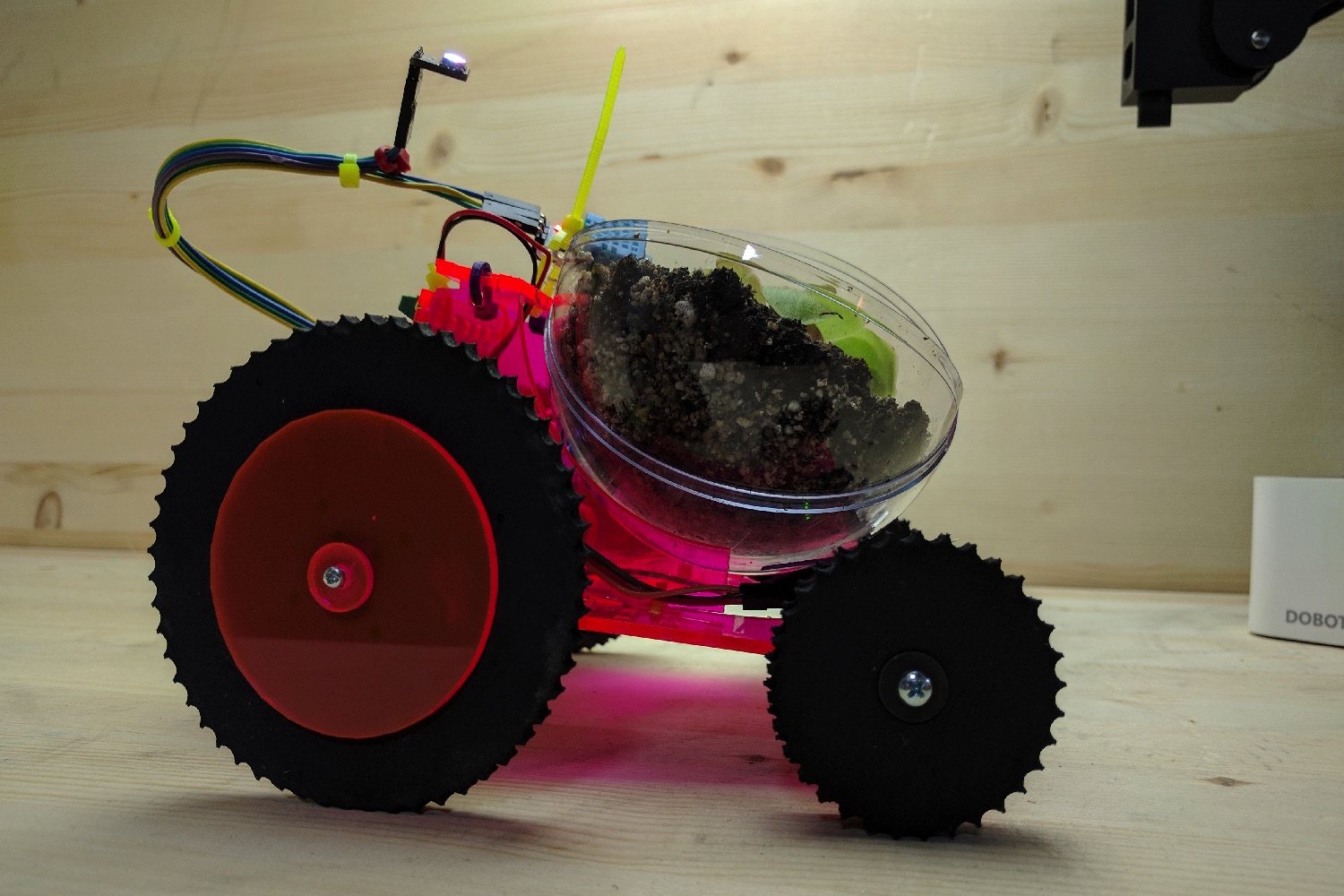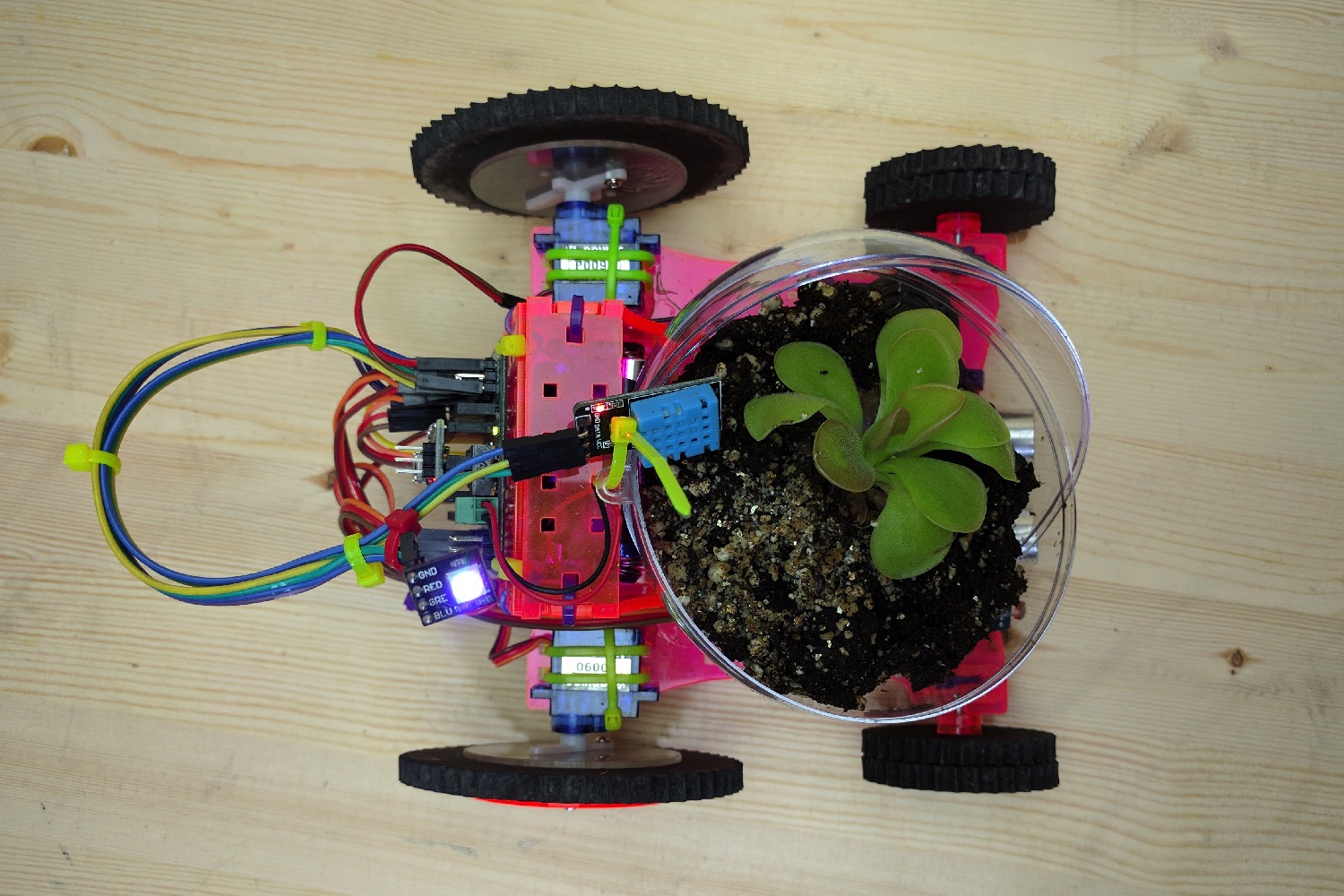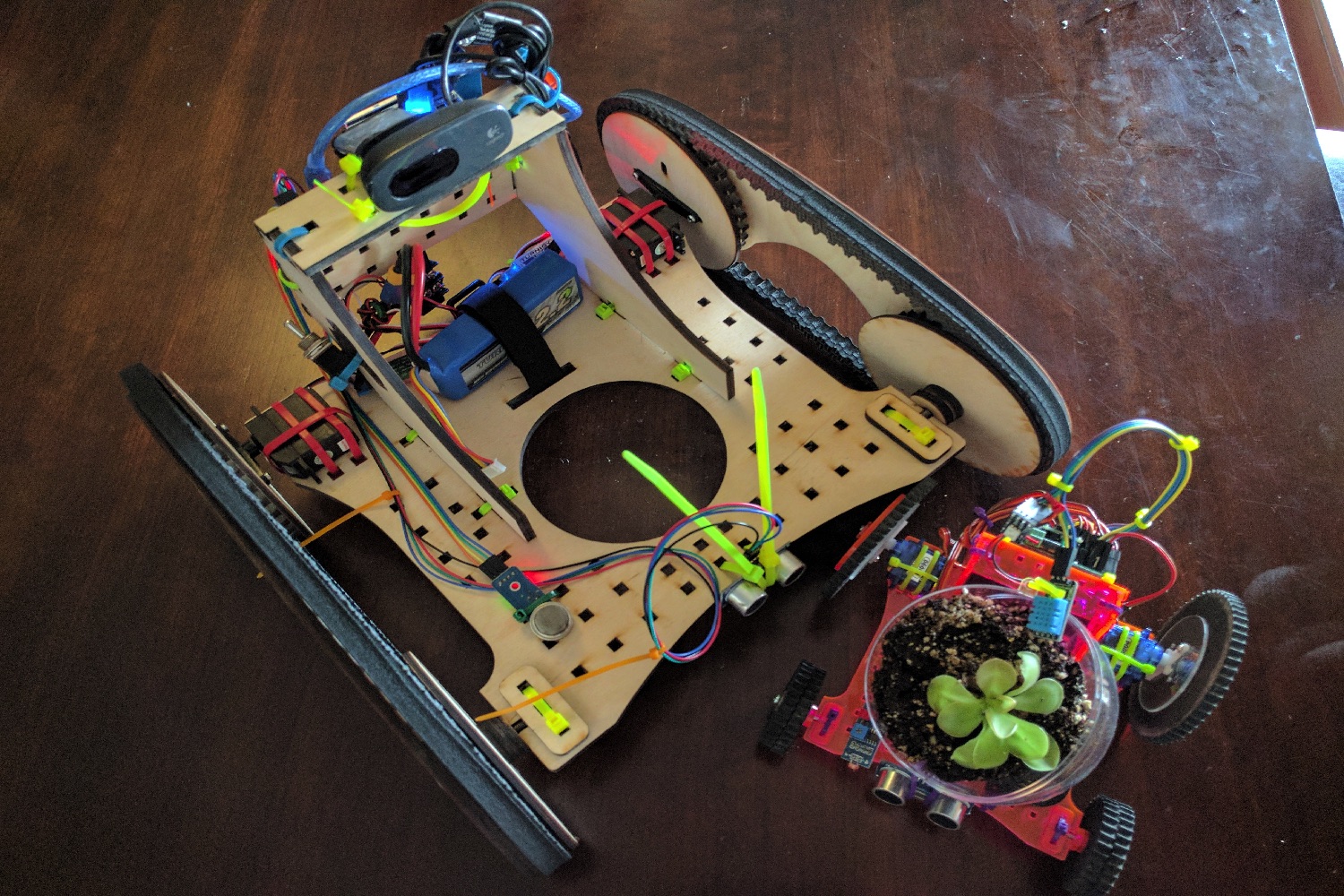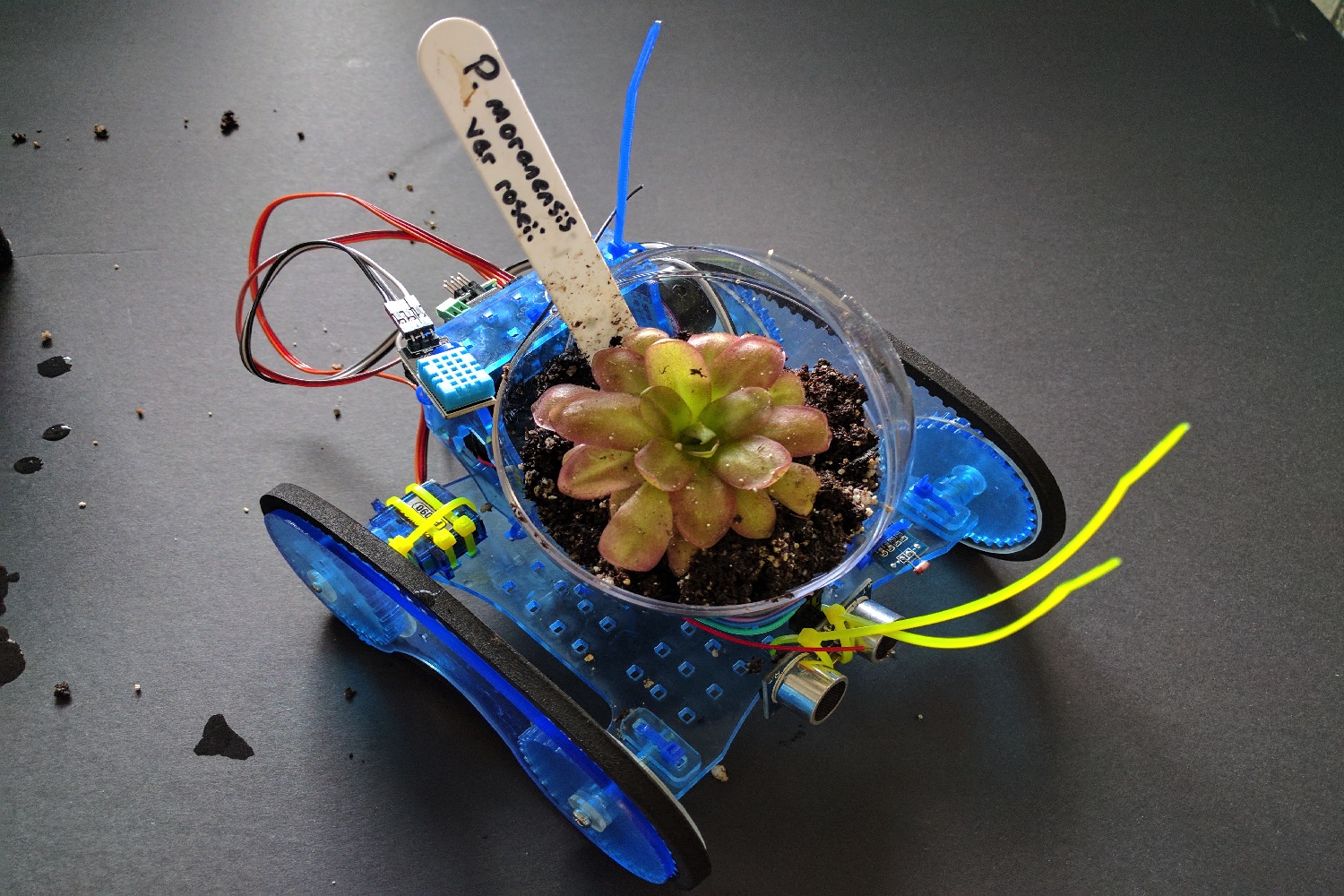“Plantoids are the first easy-to-build organic robot,” creator David Ultis told Digital Trends. “Much like we have regions of our brains that deal with signaling involuntary needs like energy levels and hunger, the Plantoid’s sensors are tuned into the needs and qualities of life of the plant specimen that it carries. The Plantoid is then able to give the formerly inert-seeming plant the ability to mobilize and hunt for better survival conditions.”
The Plantoid probably won’t replace all of your existing plant pots, but that’s not really the point. It’s as much of a fun DIY robotics project as anything else, and a great opportunity to build your own autonomous wheeled robot that comes with its own unique use case.
The kit comes with everything you need in terms of sensing equipment for measuring the moisture in soil, air temperature, humidity, ambient light, and air quality. If the completed robot can’t find what it’s searching for, it will sound an alarm so that you can provide it with what it needs to stop your plant from dying. (Think of it like a cross between a Roomba and a Tamagotchi!)
“We’ve already facilitated some pilot workshops with our local botanical gardens to great success, and we are very excited about the new topics for education that we are able to give public gardens everywhere,” Ultis said. “I’ve seen children as young as 12 building Plantoids on their own for the first time, to families enjoying a tinkering project together, to adults finding time to dig into this compelling science project. It is a new and novel addition to the robotics market.”
Plantoids are currently available for pre-order on Kickstarter, where kits start at $64. Provided it reaches its funding goal, shipping is set to take place in February.








